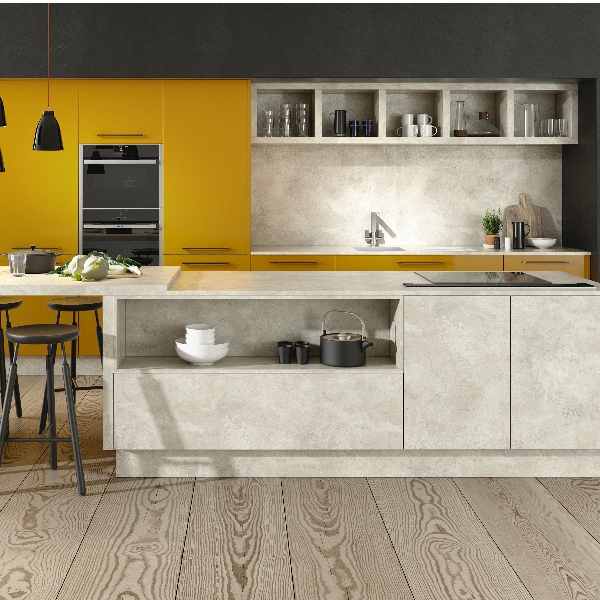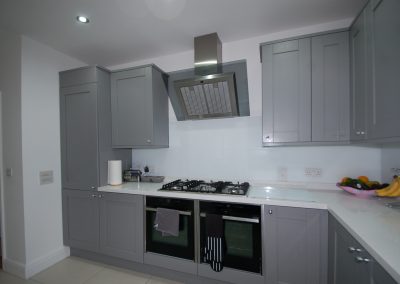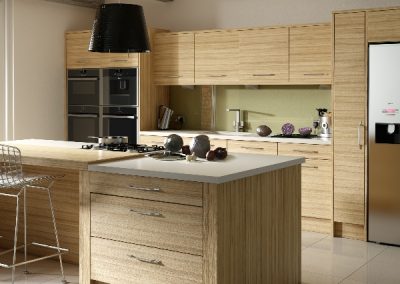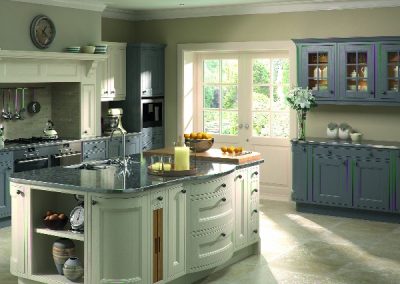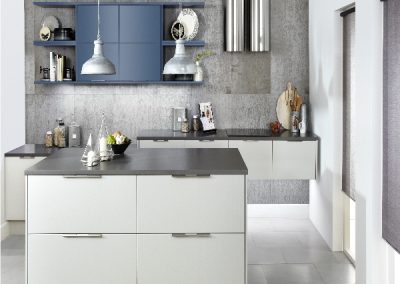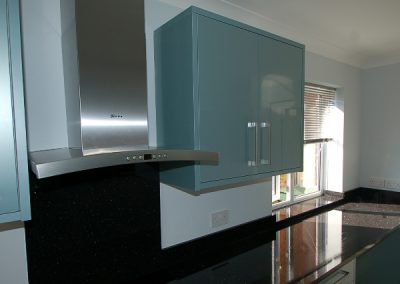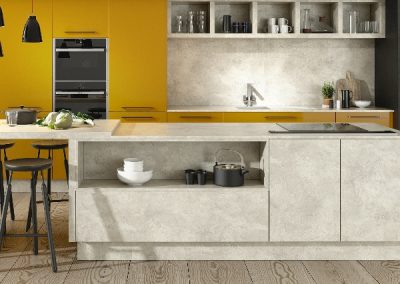Another in my series of ‘Ask the Experts’: Here is an article from Houzz which provides a very detail explanation of the different types of stone worktops available in today’s market.
Natural stone is the traditional tough guy of the kitchen, providing a durable and dependable surface that can handle all that your pots, pans and knives may throw at it. Add to that the stunning array of grains, waves and veins each unique slab might present, and your kitchen will have both practicality and a design focal point. All that remains is to choose your stone and shade – so let this handy guide help you out.
Granite: for strength
Granite is by far the most popular stone used for kitchen worktops. It comes from igneous rock (magma) that never makes it out of the volcano. The atoms form into a regular structure, which gives granite its impressive strength.
Consequently, granite will withstand most scratches and burns in the kitchen. However, different types may be more or less porous, so could require sealing before use to prevent stains.
The colours of granite are determined by the minerals and metals present as the stone develops, so different geographical regions will produce stones of varying shades, from pale and veined to the deepest, richest black.
Installers will never leave the edges at pure right angles, because they’ll be too sharp and dangerous. Slightly bevelled (sometimes called double pencil round) or rounded (bullnose) edges might work well with a modern kitchen design, whereas ornate finishes will give a stately appearance to a traditional kitchen.
Granite and other stones will usually be supplied in thicknesses of around 30mm. This is slimmer than a lot of laminate and wood tops. It’s possible to request thicker slabs, but you may have to consider the extra weight of the stone on your cabinets.
To create the impression of a very thick hunk of rock, stonemasons can mitre a box out of slimmer pieces, keeping the cost and weight down.
Slate: for dark contrast
With its fine, uniform grain and matt grey shades, slate can bring some drama to a kitchen worktop. The surface feels warm and smooth, and its dense structure makes it less porous than granite. It also copes with high temperatures from pots and pans.
Despite its density, slate can be brittle and liable to chipping, so you’d need to take care not to knock items against it. On the plus side, costs for slate are generally lower than for other stone tops. It’s not used as frequently as other materials for kitchen worktops, despite having proved its durable worth as a tile on roofs and floors, so if you’re on the lookout for something a bit different for your kitchen, maybe slate is the answer.
Limestone: for soft, earthy tones
If you’re looking for some pastel duskiness on your worktop, why not consider limestone? It’s soft and feels almost warm to the touch.
Limestone rock was formed in marine environments, probably a thousand years ago, and, as a result, most of the material is actually compressed sea life and shells. It’s not unusual to find a perfectly preserved fossil in the patterning.
The stone is mostly made up of calcites, which react to acids such as lemon, tomato and vinegar, so you’d need to wipe up spills immediately to prevent stains soaking in. Additionally, as with many stone products, it’s not actually watertight, so after the worktop is installed, it will need to be sealed.
Most interior uses for limestone are as tiles or surfaces in the bathroom, or as decorative fireplace surrounds, as many acknowledge it’s not as durable in a kitchen environment. However, with some care, this stone can prove to be a beautiful and long-lasting element in your cookspace.
Marble: for delicately veined elegance
Marble is the final amigo in the trio of calcite stones we love to use in our homes. It was formed initially as a limestone under an ancient sea, but then metamorphosed under pressure and heat, making it marginally harder and less porous in the process.
As a working surface, it’s still very important to seal it and ensure stains never get the chance to sink in. Since the lighter coloured marbles are so popular in design right now, and highly sought-after, suppliers will take great pains to point out that it’s not an easy surface to maintain. Some will not even stock marble for use in kitchens, instead recommending the lighter shades of granite for this purpose.
However, as with the softer limestone and travertines, you should be able to have marble in your kitchen if you treat it well – careful use of a chopping board, mopping up spills speedily and avoiding unnecessarily rough treatment. Since marble is quite dense, it’s a cool stone, traditionally cited as the best surface on which to make pastry.
Basalt: for an aged patina
Used extensively in construction, basalt doesn’t normally feature as a worktop material. However, it has many characteristics that make it a contender for a hard wearing worktop.
An igneous rock, it’s very tough and resistant to knives and pans, but also extremely heavy, so bear this in mind if your kitchen units are a little on the flimsy side. It’s dark grey in appearance, but can contain flecks and veins, depending on the region from which it was quarried.
Despite its strength, basalt is still very porous. Some homeowners who’ve installed it as a kitchen surface say it’s soaked up stains despite careful sealing, causing the worktop to look aged. This could make for an interesting patina over time, but if you’re uneasy about it, it would be something to bear in mind.
Soapstone: for warmth and non-porous benefits
A mid-grey oily stone from North America, soapstone is rarely found in UK kitchens, although it is offered by some suppliers. It’s unusual because it’s impervious to water, so is perfect for a splashy environment. In fact, you can create an integral sink, which looks beautiful and doesn’t need to be sealed or treated.
Soapstone doesn’t have any problems with heat, and can cope with pots and pans. The main element to be aware of is its softness: if scratched, it leaves a white dust mark from the talc it’s made from. If this happens, it’s possible to apply a little oil and rub it in. After installation, the top should be oiled periodically to bring out its darker, richer colour, and to minimise the impact of those powdery chips and scratches.
Sandstone: for durability and easy installation
Another stone that’s often overlooked for kitchen worktops in the UK is sandstone. It’s a sedimentary rock, often largely comprised of particles of quartz, which makes it tougher than limestone or marble. Sandstone is lighter than granite and less expensive, and also easier than some stones to carve or cut.
The patterns vary depending on where the stone was quarried, but slabs can display some stunning waves and grains. It’s imperative to seal worktops after installation to guard against staining, but once polished and protected, this stone should give you many years of faithful service.
Onyx: for translucent beauty
If your main goal is the wow factor, then onyx will almost certainly offer the drama and pizzazz you seek. It’s made from dissolved limestone and has an ethereal, luminous quality.
Often used to reflect light or even backlit for a glowing effect, onyx is admittedly a triumph of form over kitchen worktop function. It’s soft and porous and, as with other stones, needs to be sealed very well to prevent staining. But for a statement piece, it’s hard to beat.
If you love the luminosity of onyx but not its impracticalities, one manufactured product to look out for is lumix. It’s a composite with the same properties as onyx, but due to the additional resin in its manufacture, it repels water and is a lot tougher.

